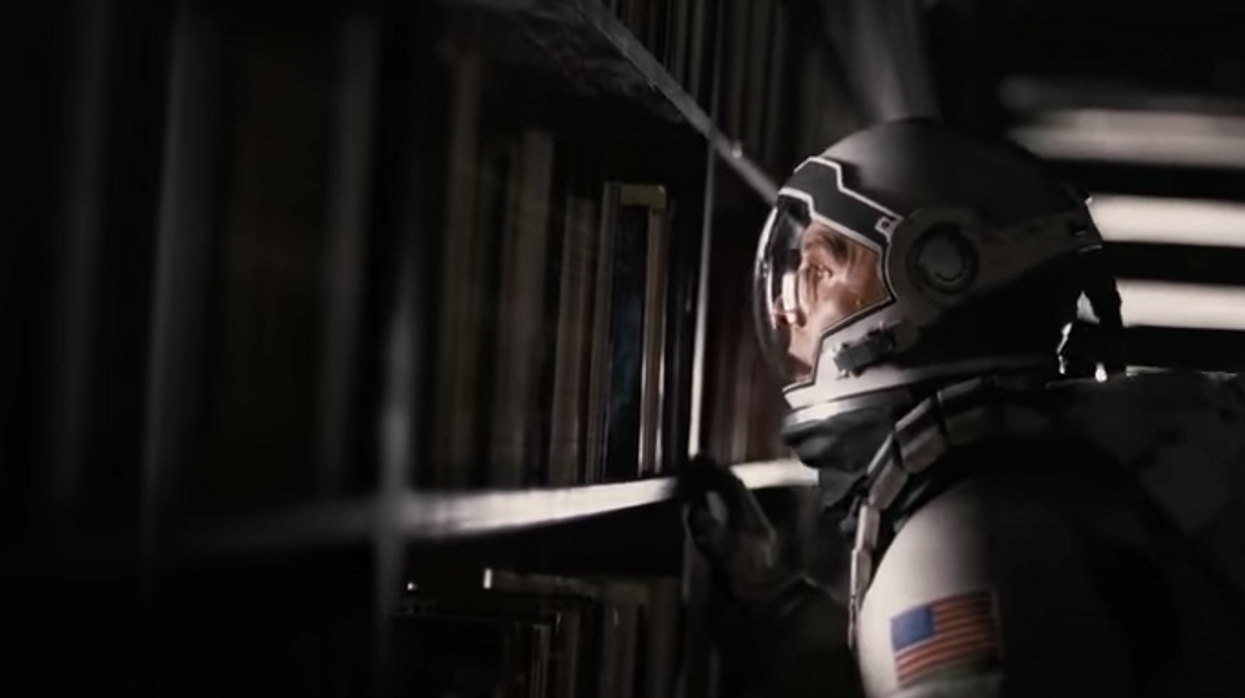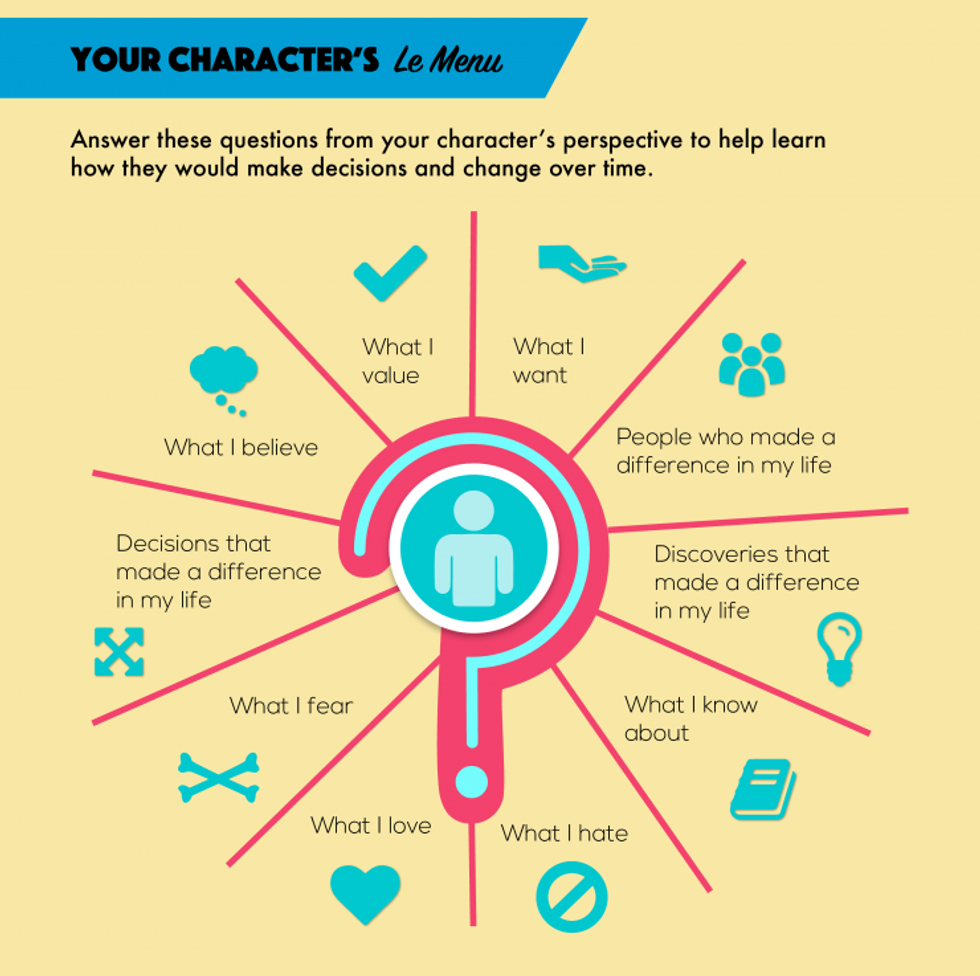How to Create Three-Dimensional Characters From a One-Dimensional Character
One-dimensional characters will sink your script. Three-dimensional characters will make it shine. How?

Stop me if you've heard this one before: the characters in your script feel too written, too contrived, like they don't exist in the real world. For many beginning writers, creating characters that pop off the page and grip the reader is incredibly hard.
The one major note I wind up giving younger writers is that a lot of their characters feel one-dimensional. The goal is to create ones that feel like they're a part of our world, or three-dimensional characters.
Multi-dimensional characters are the lifeblood of storytelling—you absolutely need them in your screenplay.
But if you think your character is not fully fleshed out, I have good news for you. There is a way to turn your one-dimensional character into a three-dimensional character. It just involves a lot of rewriting.
Today I wanted to go over those strategies and help you achieve these goals and to improve your writing. We'll go over definitions, complex characterizations, and fix your flat characters as best we can.
Let's go.
How to Create Three-Dimensional Characters from a One-Dimensional Character
As I mentioned above, today we will journey through the wonderful world of multidimensional characters. We'll go through definitions, traits, and some strategies.
But before we do all that, I want you to think about your favorite characters of all time. Think about the way they talk, the way they walk, their ideas, and their dialogue. Keep them at the forefront of your mind. Because they matter.
But now, let's start with some bad characters.
One-Dimensional Character Definition
A one-dimensional character is someone who lacks depth and who never seems to learn or grow throughout the story. They have one purpose, do not arc or change, and just come out the other side just as they went in.
So why do people hate these kinds of characters in screenplays?
We go to the movies and turn on the television because we want to go on a journey with the people inside the story. We want to empathize with them and react to what happens to them. If the characters in the story are not learning and growing with us, then what are we watching?
And why would we keep watching?
"As human beings, of course, we're all compromised and complex and contradictory and if a screenplay can express those contradictions within a character and if there's room for me to express them, that's a part I'd love to play, so much more than a character who is heroic and one-dimensional."
One-Dimensional Character Traits
A one-dimensional character might lack a reaction to a big story beat. They might play into an offensive stereotype or only exist to support the main character on their journey.
These people have no emotional depth and do not build on the story around them.

One-Dimensional Character Examples
Let's start with something weird, and look at exceptions to the rule. Forrest Gump is a great one-dimensional character. He makes everyone around him arc and we actually feel emotions about his situation and what he sees, even if it never changes him, because he's already a pure light.
Also, the characters in Seinfeld are really funny because they never change. They are the way they are, and we see the world through their lens. There are no arcs, just people dealing with the mundane and oddities of life.
Still, unless you're working on these landmark shows and stories, you want to add people with some depth.
Bad one-dimensional characters include Jar-Jar Binks, Ender from Enders Game, Elizabeth Proctor from The Crucible, and even someone like Percy from Harry Potter. I mean, what was that guy's problem? I wanted to know what made him that way.
If your character is one-dimensional, they're probably flat.
Let's Define Flat Characters
People use flat characters almost interchangeably with one-dimensional. Flat characters don't change, they are usually only in a few scenes, and they just want to support the plot, not the depth of the story. As you can see, the flat character meaning does brush up against what we have covered.
The main takeaway should be that you want to round out the characters in your story.

Two-Dimensional Character
Wait, there can be a character with two dimensions? Yup. See if you have a one-dimensional character and only add one thing to spice them up... they only gain an additional dimension. So having someone who just wants to kill themselves or someone who is defined by their cancer doesn't make a whole character. It just adds one shiny thing to them.
We often see these characters as people in the background.
Think about the guy who runs the gas station in No Country for Old Men, or Knox's abusive lawyer dad in Dead Poet's Society.
You can use these characters to build out your smaller scenes, but when you're shaping protagonists and antagonists, you want to make them three-dimensional.

Three-Dimensional Character Definition
Here's the main event. Let's talk about how to make three-dimensional characters.
They're usually main characters, villains, or protagonists. They are well-rounded characters who are written so well, they feel like real people. the best way to tell if your character is to see if you know everything about them.
What kind of music do they like, how do they define themselves, what do they say, or do, and how do they act?
"There are so many romantic comedies made, but very few dramas or love stories. And with a love story, you have to take time to develop three-dimensional characters."
Three-Dimensional Character Examples
Okay, time to tell me your favorite characters of all time. (Wow, what a good list.)
For me, I really like characters like Ellen Ripley, Elle Woods, Michael Corleone, Olivia Pope, Omar Little, Walter White, Don Draper, The Dude, The Bride, Amy Dunne, Buffy, and Cersei.
There are so many amazing characters out there. And the reason we love them, the reason they feel like they're our best friends, is that they have multiple dimensions to their personalities.
Three-Dimensional Character Traits
Complex three-dimensional characters are called this because we can feel their presence like they're standing next to us in the real world. These are people who have thoughts, concerns, and strongly held beliefs. They have wants, desires, backstories, and motives. There's a method to their madness.

How to Write Three-Dimensional Characters
Okay, you've come this far. We've learned all the words and some examples, but now you have to get into creating this stuff on your own. I wanted to give you some tips that I find useful for developing these kinds of characters.
The first idea I went back to is the idea of creating a character "Le Menu."
At the beginning of Crafting Short Screenplays that Connect by Claudia Hunter Johnson, there is an exercise the writer refers to as "Le Menu." You write five to ten answers to:
- What I love
- What I hate
- What I fear
- What I believe
- What I value
- What I want
- What I know about
- People who made a difference in my life
- Discoveries that made a difference in my life
- Decisions that made a difference in my life
Instead of doing this for you, you should do this for your characters. Really get to know them. You want to know the strong opinions your characters hold, what their passions are, and what motivates them to act.
You want to make sure that when you are plotting the story, every scene also evokes a personal problem for the characters involved. Your characters have personal things to get over, deep issues, and problems they need to surmount.
Another idea would be to list the physical traits your characters have. Is there anything that makes them unique? An eye patch, a peg leg—okay, maybe they're not a pirate, but maybe they have a limp from an old injury. After you relay that, I want to know their vices. Are they greedy, jealous, insecure? Do they smoke, drink, get too angry?
Here's the thing, you are building a person who is purveying a point of view. Whether that's antagonistic or whether or not it's supposed to convince the audience of something, that's your choice.
Lastly, you add all these things together. You take all these choices you've made and assemble the person on the page. Now, you won't write their bio in the script, but you need to show in scenes how this character grows, reconciles their baggage, and becomes someone else by the end of the script.
Got any ideas or questions?
Let me know in the comments.
What's next? Get our free screenwriting eBook!
So much of what we're talking about on No Film School when it comes to screenwriting is summarized in our new eBook. It also helps guide you through a 10-week writing plan that will get your script actually finished.













